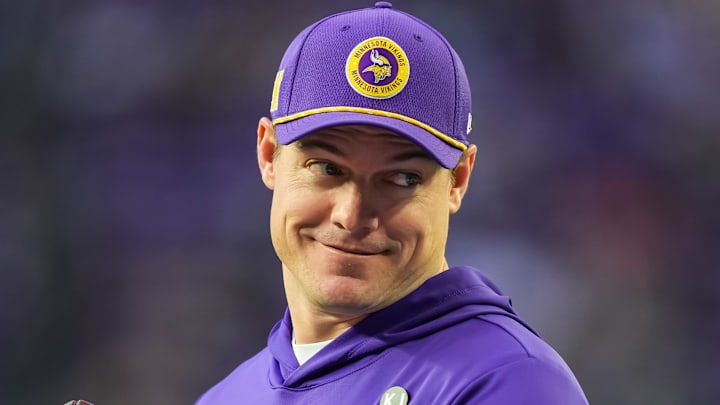As head coach Kevin O'Connell promised after last season's playoff loss to the Los Angeles Rams, the Minnesota Vikings have heavily invested in remodeling their interior offensive line this offseason. Years of half-measures at those three spots on the offensive line called for a complete 180, and newly-freed up financial resources were poured in.
Free agency brought new starters at right guard and center (Will Fries and Ryan Kelly), and first-round pick Donovan Jackson is coming in as the clear favorite to start at left guard.
As part of the remodeling, two of last year's interior offensive line starters for the Vikings last season (Ed Ingram and Garrett Bradbury) are gone. Both were seemingly dismissed as having any value as a backup, which lands as the right position to have taken.
Kristopher Knox of Bleacher Report recently outlined the best player who could still be cut from each NFL roster this offseason. For the Vikings, he went with the interior offensive line starter from 2024 who remains on the roster.
"Guard Blake Brandel was a 17-game starter for Minnesota last season after spending his first year on the practice squad and three as a depth player. However, his time as a starter may already be over.
The Vikings acquired Will Fries in free agency before drafting Donovan Jackson in Round 1. This likely pushes Brandel back into a depth role, and the Vikings could save $1.6 million by releasing him."
Cutting Blake Brandel would not make much sense for the Minnesota Vikings
The eye test (six false start penalties last season) and his PFF grade last year (No. 62 overall out of 77 qualifying guards) clearly show Brandel is not a great player.
But the positional versatility he has (two starts at right guard in 2023, three starts at left tackle in 2022) carries value in case of injuries, and keeping him around for that is better than signing someone off the street right now.
As Knox mentioned, the Vikings could clear $1.6 million in 2025 cap space by cutting Brandel after June 1, and the dead money hit for doing so is not bad at $2.3 million.
Overall, while anything on either side of the cap savings-dead money equation shouldn't be shrugged off, those numbers are not very consequential.
The more viable path to parting with Brandel, such as the Vikings might come to consider doing so in the coming months, would be via trade. That move would create more cap savings than dead money left behind, particularly after June 1 ($3.25 million in cap savings, according to Over The Cap).
The idea of trading Brandel, with more cap savings in play compared to cutting him, comes with the notion he has any actual trade value. So it's probably best to just keep him, lean into his value as a versatile depth piece on the offensive line and cross your fingers he doesn't have to play a lot this season.
